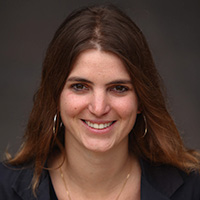
Julie Chambon
Senior Engineer
Geosyntec Consultants
Dr. Chambon is a Senior Engineer with Geosyntec Consultants, Inc. Dr. Chambon specializes in groundwater flow and transport modeling, site investigations, and remediation design. She is responsible for managing and supporting numerous projects with complex contaminant mixtures in challenging groundwater flow conditions. Dr. Chambon has developed and applied groundwater and fate and transport models to support site investigations, plume migration evaluations, assessment of remedial alternatives, and remediation performance evaluations. Dr. Chambon is a registered civil engineer in California. She has a Ph.D. in environmental engineering from the Technical University of Denmark, and B.S. and M.S. degrees in environmental engineering from Ecole Centrale de Lille and Technical University of Denmark, respectively.
SESSION CHAIR
WORKSHOP PRESENTATION
Evaluating and Applying Site-Specific NAPL Dissolution Rates During Remediation
Groundwater remediation of dense non-aqueous phase liquid (DNAPL)-impacted sites is costly and typically controlled by mass transfer constraints of DNAPL dissolution, even with enhancements. The Department of Defense (DoD) needs practical and scientifically sound methods to evaluate the effectiveness of past remediation, the potential benefit of additional treatment, and the post-remediation longevity of residual sources and back diffusion. Current approaches to predict the outcomes of DNAPL remediation include (1) screening models which lack a physical basis, and (2) coupled numerical transport and reaction models which are complex and costly. This presentation will describe an intermediate alternative, a volume-averaged model at dimensional scales of DNAPL sources and remedial actions. This approach employs well-established dissolution models using characteristic dimensions and DNAPL saturations combined with first- and second-order models of remedial processes. Volume-averaging minimizes spatial specificity, limits required site-specific inputs and reduces the burden of parameter estimation and calibration. As demonstrated with live calculations, the approach is flexible, incorporating a range of DNAPL architectures and processes, and is adaptable to the complexity of available data and remedial processes. Case studies include applications to enhanced biological degradation, in situ chemical oxidation (ISCO), and co-solvent treatment on the laboratory and field scales.